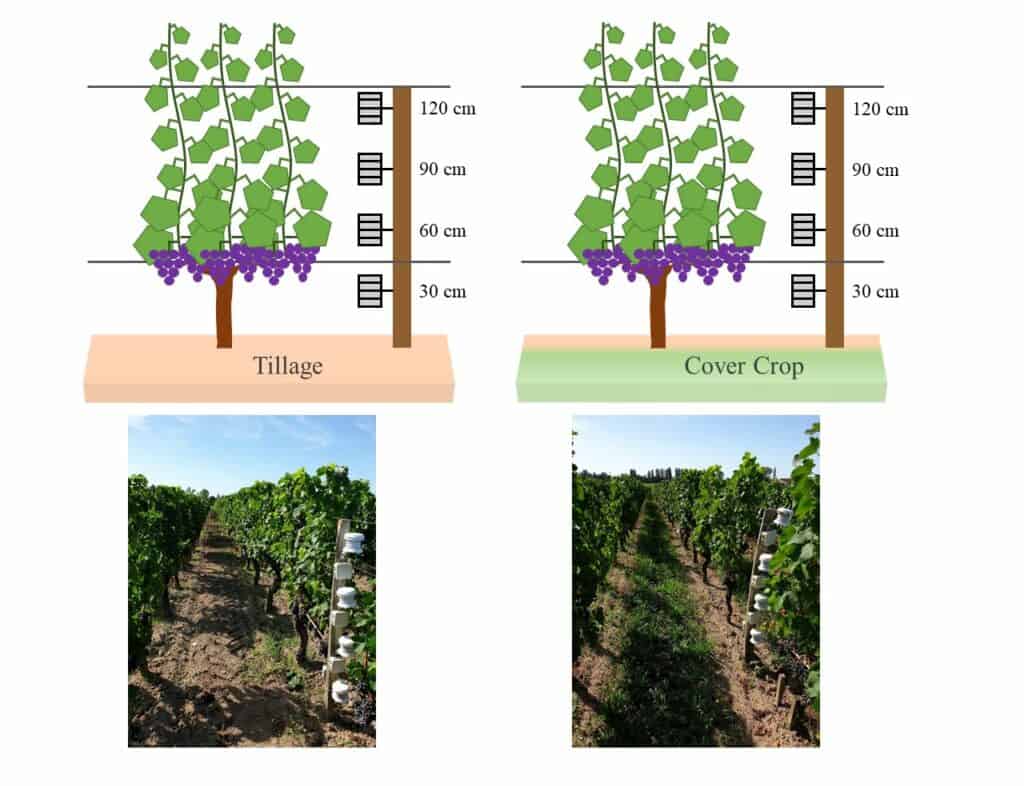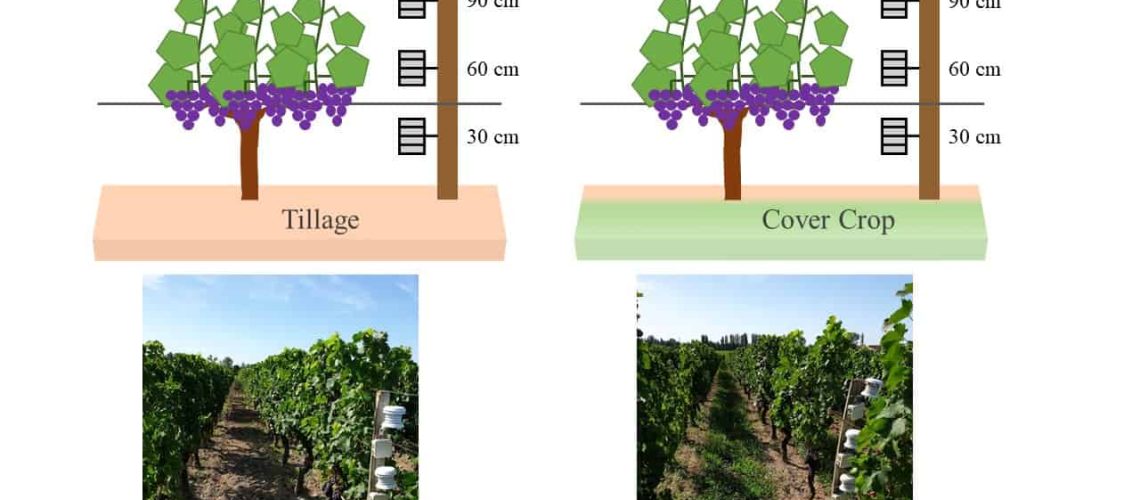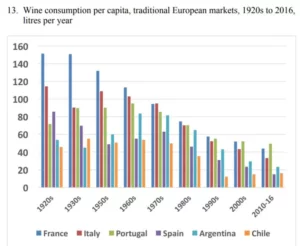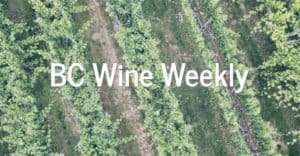Should we be increasing vine trunk height?
This study says: Yes.
“Characterisation of the vertical temperature gradient in the canopy reveals increased trunk height to be a potential adaptation to climate change”
(https://oeno-one.eu/article/view/53650)
It also says cover crops may cause a bigger temperature problem than we thought.
The trunk height part grabs my attention because many winegrowers we talk/work with are thinking about training systems. (Especially with all the new vineyards being planted). “Should we stick with VSP?”
Our hunch is no, but we’re still early in thinking this through. You don’t upset the apple cart on a hunch, but we’re following that trail a bit further. Very curious what you might think?
The argument is that with both the higher temperature, earlier ripening, and increased extreme weather events, there are significant benefits to getting the fruit higher away from the fruit zone. Anything we can do to delay technical maturation to allow phenolics to catch up is a plus.
I also suspect there are physiological benefits to higher trunks as it relates to regulating water and bigger root systems, resulting in much more robust plants. This part is more “working theory” for us right now.
This relates to our number one belief in building vine resiliency, robustness and longevity as we face climate change: bigger and deeper root systems.
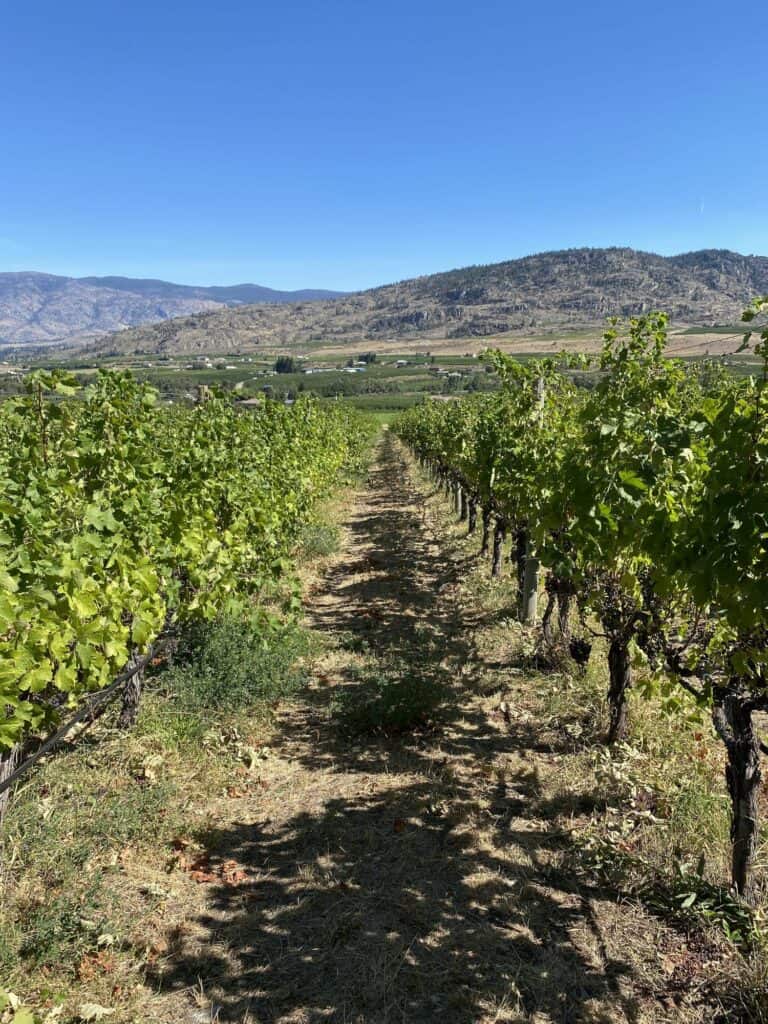
So this study seems to confirm this. More on that below.
[Aside: There’s evidence in California, with their extreme heat, of benefits of moving to bush or more “flopping” systems like Scott Henry/Smart-Dyson. In part this slows down ripening and can lower temperature with those canopies. Of course, one of the big risks, especially with bush, is mildew.
The even bigger challenge for all alternative systems is they need to be mechanized for most vineyards. If you’re planting a new vineyard, this needs to be factored in as labour becomes more spotty and mechanization cheaper and more effective. I am intrigued by Geneva Double Curtain – but mechanisation is an issue.]
Study Caveats: The study took place in Bordeaux, dry-farmed, with a lower fruit zone (45cm) than we normally see here. They measured temperature at four heights (30cm, 60cm, 90cm, 120cm) and based their results on these differences. As well, they compared cover cropped vs. tilled soil.
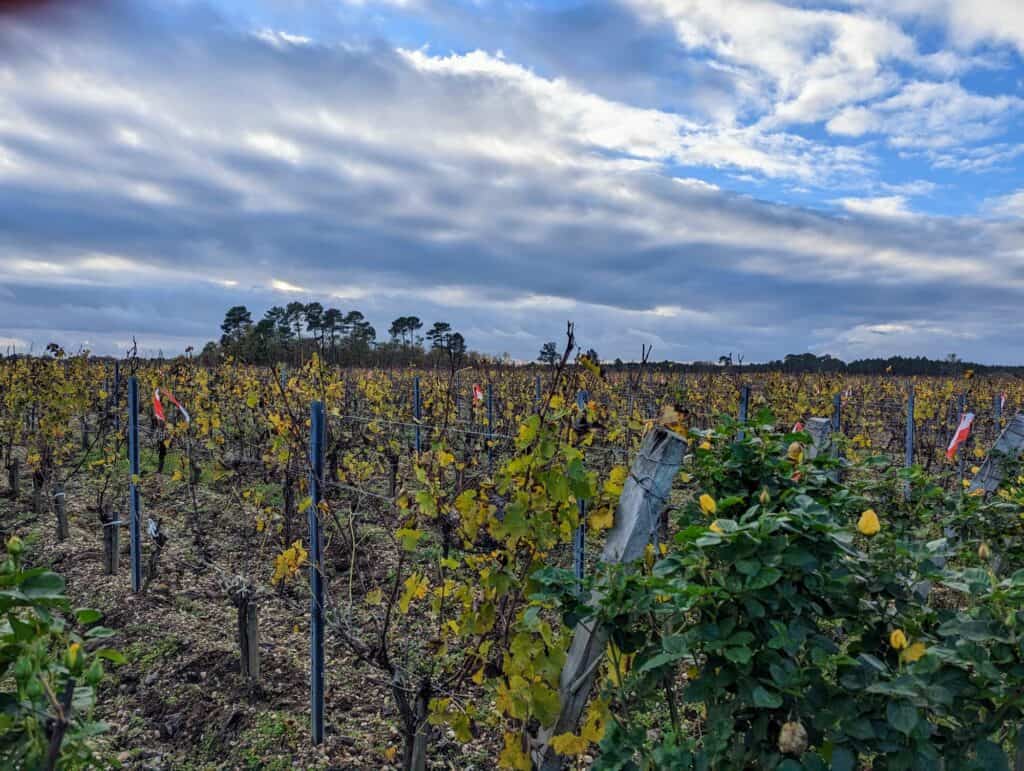
So, onto conclusions.
First of all, the big conclusion was that a higher fruit zone (90-120 cm in the study) resulted in lower maximum temperatures and higher minimum temperatures. That is, frost risk in winter/fall was reduced and heat events in summer were reduced.
This did not meaningfully change ripening. Keep in mind this conclusion is based on temperature and GDD and does not factor in potential physiological changes with a higher trunk/fruit zone. But still, this makes sense to me.
Second, a cover crop made temperature issues worse. That is, the cover crop alone increased max temperatures during hot days and reduced temperatures during cool days. That is, it increased heat risk and frost risk.
Now, that does contradict with some other studies that have showed cover crops having the opposite effect. I wonder if this is due to the study being dry-farmed, perhaps the grass dried out the surficial soil more relative to the tilled? The till will also insulate the soil a bit… I’ll need to think about this, could be important or a single study one-off.
Third, this study was a good reminder that increased soil moisture has a significant impact on air temperature, particularly within that 30cm+ above the soil. Which makes me ask: is increasing soil moisture during heat waves worth it on its own, not even considering effects on plant water demand? That is, if you increase soil moisture “substantially” will this have a significant enough affect on the heat around the plant, especially for those with lower fruit zones? The effect will be minimal with high canopies like you’d see with VSP. But it might help the fruit from getting “cooked”.
Conclusion: This study presented strong evidence that increasing trunk height has a positive effect on temperature for the fruit zone, as it relates to reducing heat and frost risk.
Further, it requires more digging if cover cropping can increase heat and frost risk (by increasing min/max temperature). If true, this is another reason to increase trunk and fruit zone height.

